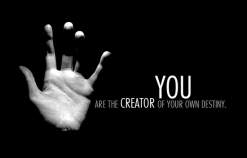Lev Manovich is the writer of The Language of New Media. Chapter 1- What is new media – focuses on the Principle of New Media and What New Media Is Not. According to Manovich, the five principles of new media as numerical representation, modularity, automation, variability, and transcoding. Each principle between old and new media is listed in logical order with the last three principles being dependent on the first two.
- Numerical Representation – According to Manovich ” all new media objects, whether created from scratch on computers or converted from analog media sources, are composed of digital code (27). There are two key consequences to this fact: A new media is described as being formally mathematically functional. A new media object becomes programmable. It is subject to algorithmic manipulation.
- Modularity – Examples of this include but are not limited GIF, JPEG images, and media clips. This is the “fractal structure of new media” according to Manovich (30). This is where media maintains its independence but can still be manipulated.
- Automation – With the numerical coding of media – principle 1 – and the modular structure of a media object – principle 2 – allowing for automation of media creation and access humans can now be removed from part of the creation process allowing for a more “automated media generation” eventually graduating towards a “high-level” automation of media creation allowing computers to do more without the assistance of humans.
- Variability – This is related to automation. It would also not exist without modularity. Manovich explains, “A new media object, is not something fixed once and for all, but something that can exist in different, potentially infinite versions (36).” It is considered “stored digital ” rather than a “fixed medium(36). “Variability allows for its objects and information to be viewed differently rather than marketing the same addresses in the same element.
- Transcoding – This is the final principle. It is where Manovich says new media is the most”substantial.” Images translate to format allowing images to translate into another format with computer files (47). This deals with the file size, type, format, compression type used and much more.
Manovich has dedicated the end of this chapter to “What New Media Is Not.”He list the differences between new and old media and notated it to be subject to scrutiny.
Cinema as New Media – Manovich does not believe this is at all unique to new media and can also be found in old media (50). Over time cinema – the original media – has been preparing us for the new media.
The Myth of the Digital – We can not be helped when trying to separate new and old media due to discrete representation, random access, multimedia already containing the principles.
Myth of Interactivity – The concept of interactive is used to broadly. Manovich tries to avoid using this term in his book (55). Modern HCI is interactive. It allows manipulation of the computer with the user establishing its real-time, when means it is meaningless to call a computer media interactive.

